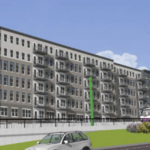Providing housing options that meet people’s needs across a range of ages, incomes, and family sizes is essential to an inclusive and economically prosperous D.C. region.
Building more housing near transit, expanding the variety of housing choices available, and preserving and building affordable housing will allow us to meet our region’s growing housing needs while creating sustainable, diverse, and thriving communities.
Allow a variety of housing options
The demand to live in walkable, transit-connected communities near Metro stations is high. This and recurring opposition to infill development have led to too little supply and high prices for homes near transit.
Allowing a wider variety of housing options near transit and commercial corridors increases the supply of needed housing and will help bring down housing prices and create more equitable access for households of different incomes, ages, and family sizes.
Preserve and build affordable housing
Even with abundant housing options, additional policies are needed to help us bridge the gap where housing costs are too expensive for working families and people on fixed incomes. Preserving existing affordable housing and building new affordable housing ensures everyone has access to safe, affordable housing, provides economic opportunity for all, reduces the risk of displacement, and supports diverse, vibrant communities,
Latest Happenings

Written Recommendations: MoCo’s More Housing N.O.W. Package

Take action! Contact your representatives to support the Maryland Housing for Jobs Act
CSG in the News: MoCo residents polarized over proposed workforce housing legislation

Testimony: Support for the Flats at Glenridge Station, DSP-23008 & DDS-24002 (Prince George’s)

